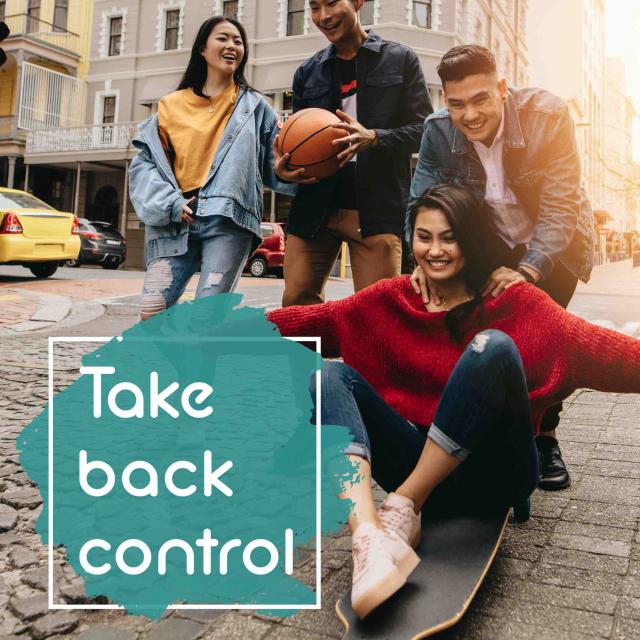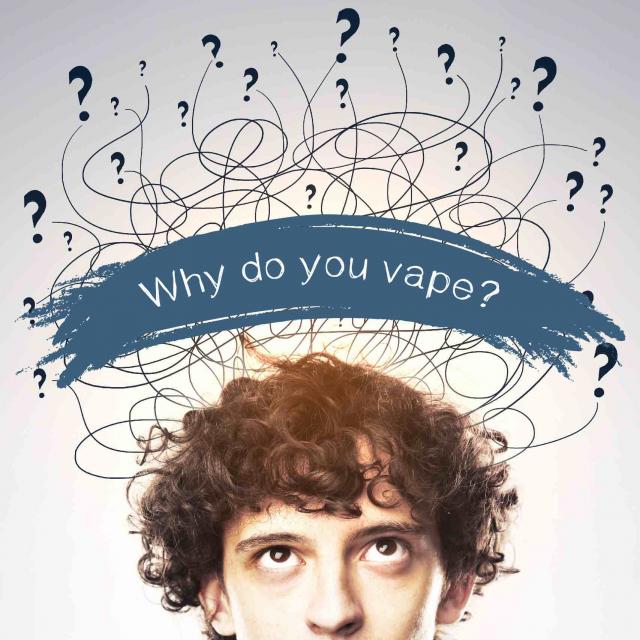Most vapes contain nicotine, which is very addictive. Over time, your brain and body get used to having nicotine, which means you may have nicotine withdrawal symptoms when you quit vaping. Find out what you can do to help manage your withdrawal symptoms.

Nicotine Addiction
Nicotine is in most vapes and is very addictive. The more you vape, the more your brain and body get used to having nicotine, and the harder it is to go without it. When you go without vaping, the nicotine level in your bloodstream drops, which may cause unpleasant feelings, physical symptoms, and strong urges to vape. This is nicotine addiction.
If you answer yes to one or more of these questions, you may be addicted to vaping.
- Do you continue to vape even though you want to quit or think it’s hurting you in some way?
- Do you feel anxious or irritable when you want to use your vape but can’t?
- Do thoughts about vaping interrupt you when you are focused on other activities?
- Do you still vape after getting in trouble with your parents or school for vaping?
- Have you ever tried to quit vaping but couldn’t?
- Do you feel like you have lost control over your vaping?
Knowing more about nicotine addiction—and recognizing that you may be addicted—will help you understand why your body feels like it does and why it sometimes feels like you can’t go a minute without thinking about vaping. Trying some of the different strategies described below will help you figure out what works best for you to manage these feelings.
If you vape other substances besides nicotine, like marijuana or other drugs, and think you may be addicted, learn more here.
Nicotine Withdrawal Symptoms
When you quit vaping, your body and brain must get used to going without nicotine. This is called nicotine withdrawal. The side effects of nicotine withdrawal can be uncomfortable and can trigger cravings for nicotine. Common nicotine withdrawal symptoms include:
- Feeling irritable, restless, or jittery
- Feeling sad or down
- Feeling anxious
- Feeling tired or groggy
- Having trouble thinking clearly or concentrating
- Having trouble sleeping
- Feeling hungry
- Having intense cravings for e-cigarettes
Managing Nicotine Withdrawal
Nicotine withdrawal is different for everybody. For some people, withdrawal symptoms can make quitting hard or frustrating. The good news is that the uncomfortable feelings of withdrawal will fade over time if you stay away from vapes. The longer you go without vaping, the more your body can get used to being nicotine-free. Over time, you will gain more confidence in your ability to stay vape-free and regain control of your body and mind.
If you are bothered by symptoms of nicotine withdrawal when you quit, try out some of these strategies to help you cope:
Ask for help from a doctor or health professional. Talk to your doctor or another healthcare professional about your plans to quit. Ask how they can help you manage your withdrawal symptoms.
Stay hydrated. Drink plenty of water throughout the day. Water can help ease uncomfortable nicotine withdrawal symptoms such as headaches, sweating, hunger, and fatigue. Drinking water may also help reduce cravings.
Get your ZZZs. When you are quitting, it is common to feel tired or groggy during the day, or to have trouble sleeping at night. Make sleep a priority. Keep a consistent sleep schedule and practice good sleep habits—turn off screens at least an hour before bed, and don’t sleep with your phone in your bedroom. Getting exercise during the day can also help you relax and feel sleepier at night.
Eat healthy snacks. You may feel hungrier when you are quitting vapes. Keep a stash of healthy snacks in your backpack or locker. Crunchy snacks like carrots or raw nuts can also help combat cravings by keeping your hands and mouth busy.
Get support from friends and family. You don’t have to go through your quitting experience alone. Tell your friends and family that you’re quitting vaping, and ask for their support.
Be prepared for cravings. When you first quit vaping, you may feel strong urges to vape. It's important to have a plan for how you’ll handle a craving when it hits—this will help you resist the urge to vape and stay vape-free.
Build your quit plan. A personalized quit plan can help you get through nicotine withdrawal as you quit vaping. Even if you already started quitting, it’s not too late.
If you smoke cigarettes or use other tobacco products besides vapes, now is a good time to quit those too. These products contain nicotine and are harmful to your health. There are free tools to help you quit. Download our quitSTART app, sign up for SmokefreeTXT, or chat with an expert online using the National Cancer Institute’s LiveHelp service.
Nicotine Withdrawal and Your Mood
As your body adjusts to life without nicotine, you may have mood swings or feel increased anxiety or sadness. If you become depressed or are having extreme sadness, do not ignore these feelings or keep them to yourself. Let someone who cares about you know how you are feeling, and talk to a doctor or another trusted healthcare professional.







